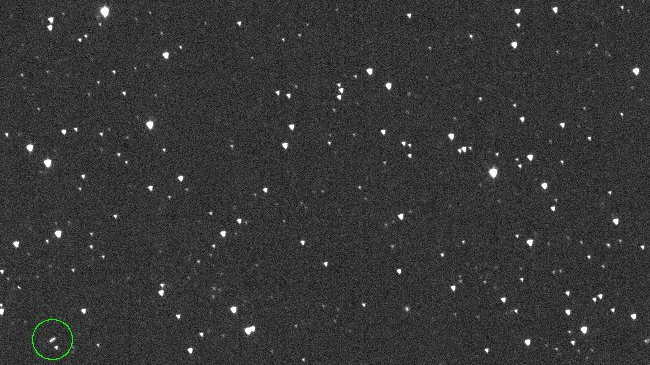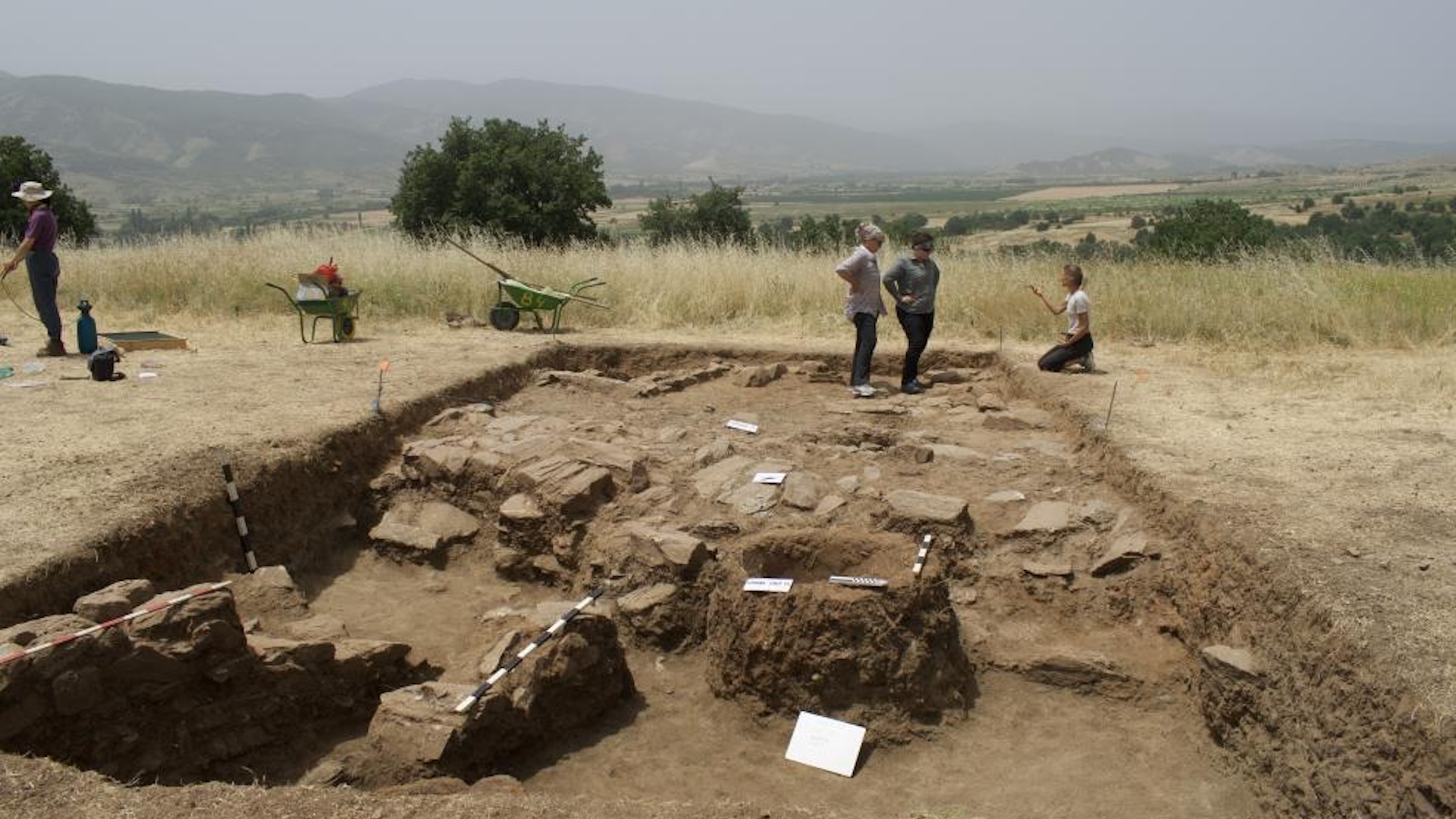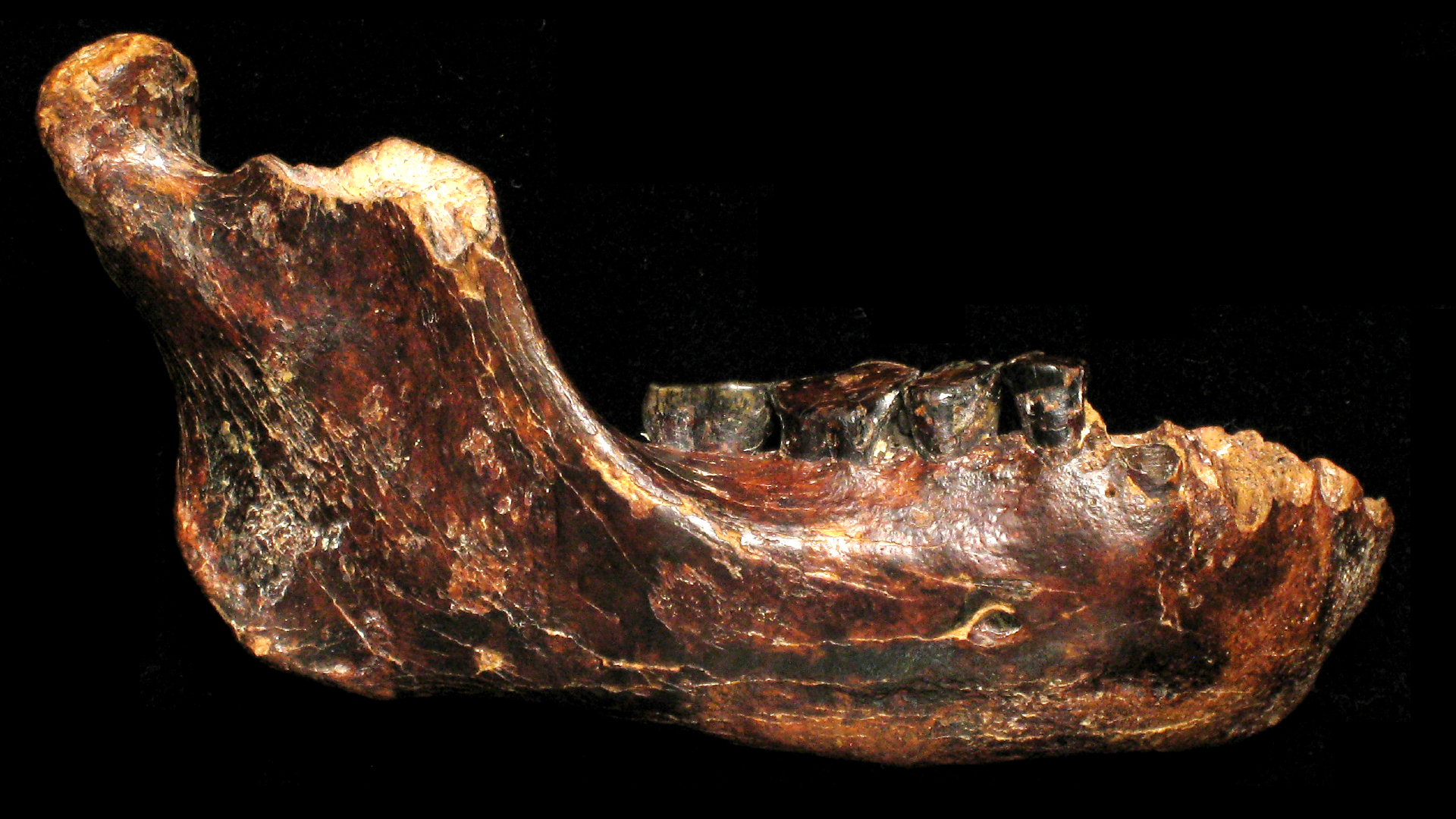Watch potential 'city-killer' asteroid 2024 YR4 as it hurtles through space
Asteroid 2024 YR4 has a tiny chance of hitting Earth in 2032, but for now, you can watch it fly harmlessly through space in a short time-lapse video captured by the NASA-funded ATLAS telescope.

A telescope has revealed footage of an asteroid big enough to wipe out a city as it flies through the night sky — and there's a tiny chance it will come back to hit us in 2032.
The NASA-funded Asteroid Terrestrial-impact Last Alert System (ATLAS) telescope in Chile recorded asteroid 2024 YR4 on Dec. 27, 2024, according to the NASA Center for Near Earth Object Studies. The footage shows YR4 shooting through space after it made a close approach with Earth on Dec. 25.
YR4 has a tiny chance of hitting Earth in 2032, but the risk has increased since ATLAS captured the footage in December. Last week, NASA observations increased the likelihood of an impact to 1 in 43, or roughly 2.3%, up from the previous estimate of 1.2%.
The 1 in 43 odds are a little unnerving, given that YR4 is about 130 to 300 feet (40 to 90 meters) wide and capable of taking out a city. However, while the chances of YR4 striking Earth have increased, there's still a 97.7% chance that the asteroid will miss our planet entirely. In other words, the odds are still very much in our favor.
"While still an extremely low possibility, additional observations and analysis of asteroid 2024 YR4 indicate that its impact probability with Earth has increased to a 2.3% chance on Dec. 22, 2032," Molly Wasser, a spokesperson for NASA, posted on NASA's planetary defense blog on Friday (Feb. 7).
Additional observations will help scientists hone their measurements of the asteroid's orbit, likely reducing the chances of impact to 0%, as has happened with many other objects flagged on NASA's asteroid risk list in the past. However, it's also possible that the chances of impact could continue to rise, according to NASA.
Related: Here's what could happen if asteroid Bennu smashes into Earth in 157 years
Sign up for the Live Science daily newsletter now
Get the world’s most fascinating discoveries delivered straight to your inbox.
YR4 currently has a risk rating of 3 out of 10 on the Torino Scale, which categorizes potential Earth impact events from asteroids and comets. Torino Scale 3 means that an object capable of causing localized destruction has a more than 1% chance of impact, but that likelihood will probably fall to 0% with new observations.
The risk of a strike from a newly identified asteroid can be higher at first due to uncertainty. Researchers initially identify certain characteristics of the asteroid's orbit with a higher degree of certainty than others, Live Science's sister site Space.com reported. However, as researchers make additional observations, they can narrow down an asteroid's trajectory to be certain it's not on a collision course for Earth.
If YR4 were to hit Earth, it would likely strike somewhere along what NASA calls a "risk corridor," which stretches across the eastern Pacific Ocean, northern South America, the Atlantic Ocean, Africa, the Arabian Sea, and South Asia.
Current estimates suggest that the asteroid would release about 8 megatons of energy on impact — about 500 times more powerful than the devastating atomic bomb dropped on Hiroshima in Japan.
In March, the James Webb Space Telescope will examine YR4 and better assess its size. Researchers will then continue to monitor the asteroid through April, after which it will be too faint to observe until 2028, according to NASA. YR4 is the only asteroid threatening us in the near future and if the odds of contact remains above 1%. scientists could attempt to deflect it from its course.
"Currently, no other known large asteroids have an impact probability above 1%," Wasser wrote on NASA's planetary defense blog on Jan. 29.

Patrick Pester is the trending news writer at Live Science. His work has appeared on other science websites, such as BBC Science Focus and Scientific American. Patrick retrained as a journalist after spending his early career working in zoos and wildlife conservation. He was awarded the Master's Excellence Scholarship to study at Cardiff University where he completed a master's degree in international journalism. He also has a second master's degree in biodiversity, evolution and conservation in action from Middlesex University London. When he isn't writing news, Patrick investigates the sale of human remains.
You must confirm your public display name before commenting
Please logout and then login again, you will then be prompted to enter your display name.









